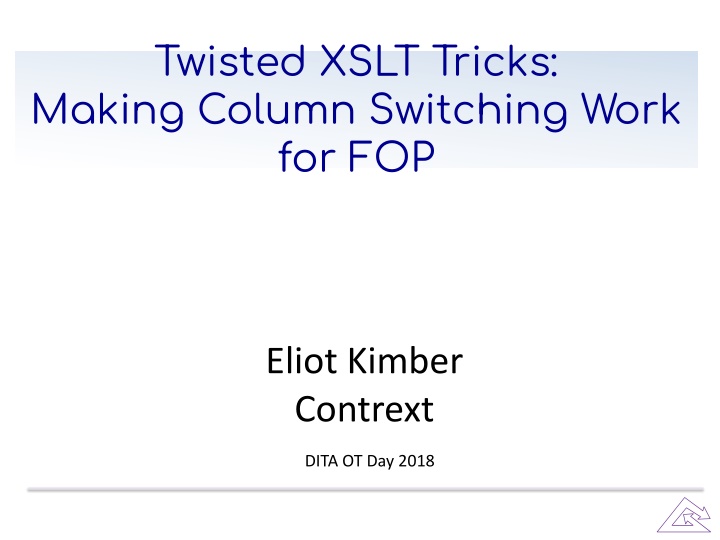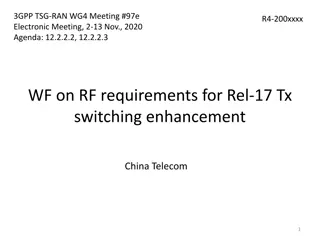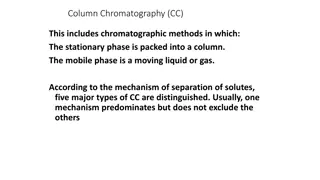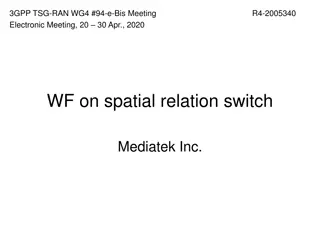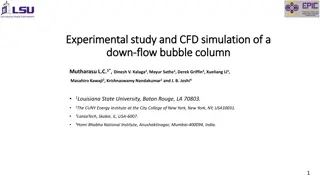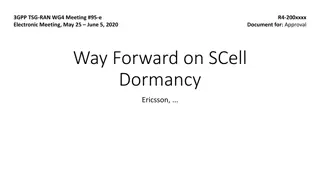Twisted XSLT Tricks for FOP - Making Column Switching Work
Independent consultant Eliot Kimber shares insights on tackling column and page sequence challenges using XSLT for FOP. Discover innovative solutions and strategies presented at DITA OT Day 2018, addressing issues with changing column counts and page sequences efficiently. Gain valuable knowledge on tree splitting techniques, column and page sequence splitting methods, and effective post-processing approaches to enhance your FOP formatting capabilities.
Download Presentation

Please find below an Image/Link to download the presentation.
The content on the website is provided AS IS for your information and personal use only. It may not be sold, licensed, or shared on other websites without obtaining consent from the author.If you encounter any issues during the download, it is possible that the publisher has removed the file from their server.
You are allowed to download the files provided on this website for personal or commercial use, subject to the condition that they are used lawfully. All files are the property of their respective owners.
The content on the website is provided AS IS for your information and personal use only. It may not be sold, licensed, or shared on other websites without obtaining consent from the author.
E N D
Presentation Transcript
Twisted XSLT Tricks: Making Column Switching Work for FOP Eliot Kimber Contrext DITA OT Day 2018
About the Author Independent consultant focusing on DITA analysis, design, and implementation Doing SGML and XML for cough 30 years cough Founding member of the DITA Technical Committee Founding member of the XML Working Group Co-editor of HyTime standard (ISO/IEC 10744) Primary developer and founder of the DITA for Publishers project (dita4publishers.org) Author of DITA for Practitioners, Vol 1 (XML Press) DITA OT Day 2018
Agenda The trouble with columns in FO And also page sequences Solution: Split the trees Demonstration DITA OT Day 2018
THE TROUBLE WITH COLUMNS (AND PAGE SEQUENCES) DITA OT Day 2018
Changing Column Counts In FO: Can change from multi column to single column Only allowed on direct children of fo:flow FOP enforces this rule PDF2 transform wraps entire flow in a single block (more or less) How to change column counts then? DITA OT Day 2018
Page Sequence Switching Switch from portrait to landscape within a chapter. PDF2 generates page sequences at high level No easy way to switch page sequences with PDF2 design DITA OT Day 2018
SOLUTION: SPLIT THE TREES DITA OT Day 2018
Column Splitting Set base column count to 2 then set top-level fo:block to span="all" Put out marker elements to signal start and end of a column change Post-process generated FO to split top-level blocks at span change boundaries DITA OT Day 2018
Page Sequence Splitting Same approach as for columns Put out start/end markers for page sequences Post-process FO to split page sequences at marker boundaries. DITA OT Day 2018
HOW TO DO THE SPLITTING DITA OT Day 2018
General Tree-Splitting Algorithm Provided by Gerrit Imsieke on the XSL mailing list Uses for-each-group to split original tree on marker elements: Get the nodes before the start marker Get the nodes after the start marker Nodes not in either group must be between the markers Construct new trees, one for each set of nodes DITA OT Day 2018
Confession I don t know how it works https://getyarn.io/yarn-clip/9c369b08-76b9-4eb8-b00e-432aa1a36977#BJ_HVBSn2Q.copy DITA OT Day 2018
Gerrits Original Code <xsl:template match="node() | @*" mode="#default split"> <xsl:copy> <xsl:apply-templates select="@* | node() mode="#current"/> </xsl:copy> </xsl:template> <xsl:template match="fo:block[empty(ancestor::fo:block)]" mode="#default"> <xsl:variable name="block-root" as="element(fo:block) select="."/> <xsl:for-each-group select="descendant::node()[empty(node())]" group-starting-with="two-column-start"> <xsl:for-each-group select="current-group()" group-ending-with="two-column-end"> <xsl:apply-templates select="$block-root" mode="split"> <xsl:with-param name="restricted-to" as="node()*" select="current-group()/ancestor-or-self::node()" tunnel="yes"/> <xsl:with-param name="two-col-start" as="xs:boolean" tunnel="yes" select="exists(self::two-column-start)"/> </xsl:apply-templates> </xsl:for-each-group> </xsl:for-each-group> </xsl:template> <xsl:template match="node()" mode="split" priority="1"> <xsl:param name="restricted-to" tunnel="yes" as="node()+"/> <xsl:if test="exists(. intersect $restricted-to)"> <xsl:next-match/> </xsl:if> </xsl:template> <xsl:template match="fo:block[empty(ancestor::fo:block)] mode="split"> <xsl:param name="restricted-to" tunnel="yes" as="node()*"/> <xsl:param name="two-col-start" tunnel="yes as="xs:boolean"/> <xsl:copy> <xsl:apply-templates select="@*" mode="#current"/> <xsl:if test="$two-col-start"> <xsl:attribute name="span" select="'none'"/> </xsl:if> <xsl:apply-templates mode="#current"/> </xsl:copy> </xsl:template> <xsl:template match="two-column-start | two-column-end mode="split"/> DITA OT Day 2018
The Key Bit of the Code <xsl:template match="fo:block[empty(ancestor::fo:block)]" mode="#default"> <xsl:variable name="block-root" as="element(fo:block) select="."/> <xsl:for-each-group select="descendant::node()[empty(node())]" group-starting-with="two-column-start"> <xsl:for-each-group select="current-group()" group-ending-with="two-column-end"> <xsl:apply-templates select="$block-root" mode="split"> <xsl:with-param name="restricted-to" as="node()*" select="current-group()/ancestor-or-self::node()" tunnel="yes"/> <xsl:with-param name="two-col-start" as="xs:boolean" tunnel="yes" select="exists(self::two-column-start)"/> </xsl:apply-templates> </xsl:for-each-group> </xsl:for-each-group> </xsl:template> DITA OT Day 2018
Gotchas Had to ensure IDs were not duplicated Selecting all leaf elements No need to look inside blocks or tables, for instance More than just fo:block DITA OT Day 2018
Demo: Federal Acquisition Regulations Use of FOP is customer requirement Mostly one-column but some two-column tables Mostly portrait but some rotated (landscape) tables DITA OT Day 2018
Questions? DITA OT Day 2018
